Processing methods of high-quality coffee beans
There are a pair of oval seeds in the center of the fruit of the coffee tree, which are covered with exocarp, endocarp and pulp. Ripe fruit will rot in a short period of time without treatment, so the purpose of refining is to enable coffee beans to be preserved for a long time, easy to store and circulate.
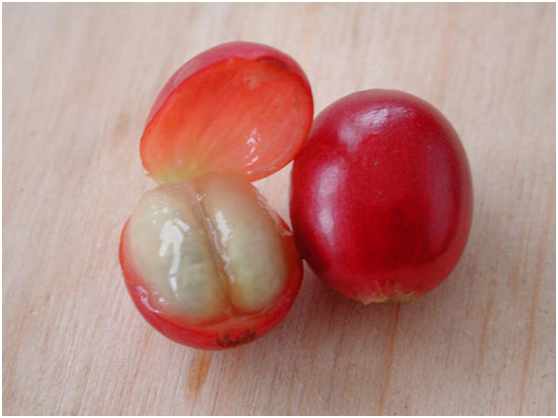
Figure (1) Coffee fruit
After the fresh coffee fruit is harvested, it should be dealt with immediately. Refining is to remove the skin and pulp of the coffee fruit, and then remove the seed from the shell, which is what we often call raw coffee beans. The refined coffee beans are still raw beans, and then they are roasted to produce the various flavors of coffee beans that we usually drink.
1. Coffee refining method
Coffee refining methods are mainly divided into three categories: drying method, water washing method and semi-washing method. Generally speaking, the coffee fruit of 5000KG can be obtained from 1000kg coffee raw beans.
1.1 drying method
Drying is a traditional processing method of coffee beans, the fruits need to be dried in the natural sun after harvest, and some mechanical drying is carried out at the same time. The process is: harvest → sun field (sunlight exposure) → sheller (remove pulp, etc.) → grading (electronic bean selector or hand selection, screen, etc.) → export.
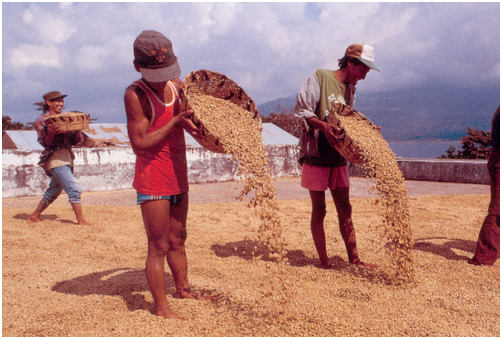
Figure (2) Coffee beans dried
The color of raw beans treated by drying is yellow, and the water content of coffee beans is generally about 11%, 12%. The advantage is that sun beans have better sweetness and mellow thickness, and less sour taste, so many coffee fans like it very much. The disadvantage is that due to the use of artificial and natural treatment methods in the process, the sun-cured beans do not look good in appearance, do not look good, the quality is unstable, and there will be greater ups and downs.
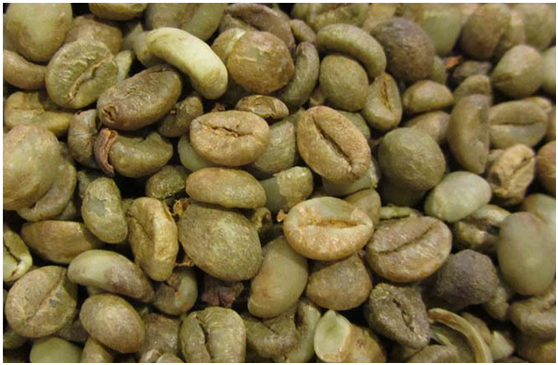
Figure (3) Coffee beans dried
1.2 washing method
Water washing is the most popular treatment method at present, and most boutique coffee beans will choose water washing method. Washing coffee refining process: harvest → storage tank (removal of impurities and immature beans) → pulp removal machine (removal of pulp and impurities) → fermentation tank (removal of mucous membrane attached to endocarp) → washing pool (selection of light and hard beans) → sun drying field (or dryer) → sheller (removal of endocarp) → grading (electronic bean selector or hand selection, sieve, etc.) → outlet.
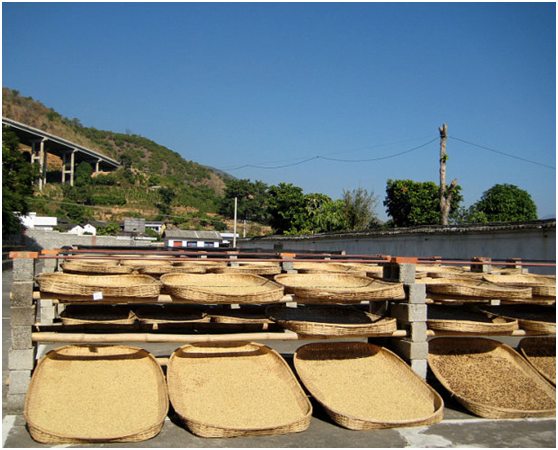
Figure (4) washing drying field
The appearance of coffee beans processed by washing is neat, and the impurities and defective beans are less, and the water content of coffee beans is generally about 16%. The advantage is that it has less miscellaneous flavor, clear taste and bright sour taste; the biggest disadvantage is that coffee beans are easy to get sour and astringent taste during fermentation, and a fermented bean will spoil 50 grams of beans.
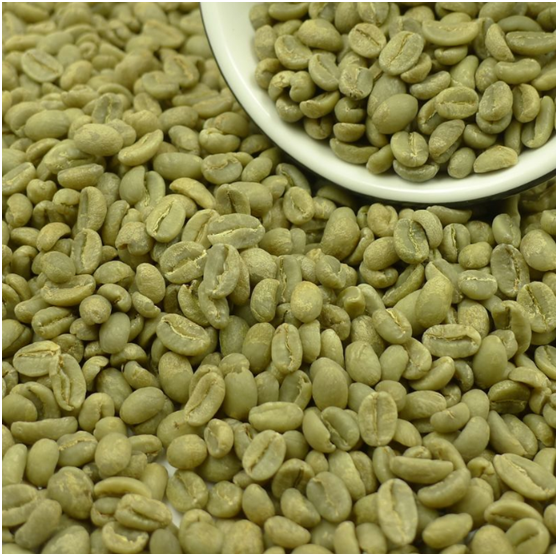
Figure (5) Yega Xuefen G2 / Water washing method
1.3 semi-washing method
Semi-washing, also known as "honey treatment", is a compromise between drying and washing, eliminating the need to ferment coffee fruits. Harvest → storage tank (remove impurities and immature beans) → pulp removal machine (remove pulp and impurities) → washing pool (select light and hard beans) → sun field (or dryer) → sheller (removal of endocarp) → classification (electronic bean selector or hand selection, sieve, etc.) → outlet.
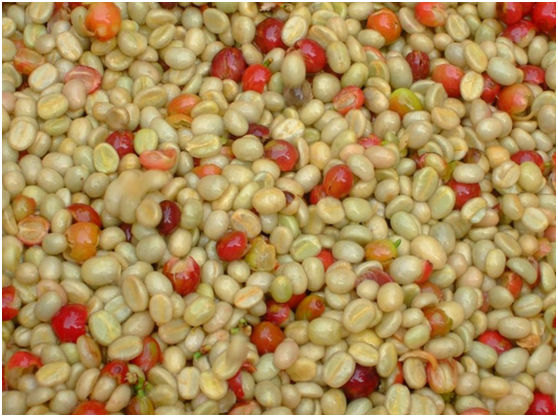
Figure (6) Coffee fruit after removing the pulp
The quality of honey treatment is more stable than that of drying treatment, but not as good as that of washing treatment. This method of processing coffee beans by honey treatment has recently been sought after by coffee lovers. It has a sweet taste and is rich in Crema. It is suitable for extracting Espresso from the base of Italian coffee. The advantage is that it can restore the flavor of coffee beans, the coffee is more sweet, and the taste of red wine is outstanding. The disadvantage is that coffee beans are very vulnerable to contamination and mildew during the drying process after the exocarp of coffee berries are removed.
Important Notice :
前街咖啡 FrontStreet Coffee has moved to new addredd:
FrontStreet Coffee Address: 315,Donghua East Road,GuangZhou
Tel:020 38364473
- Prev
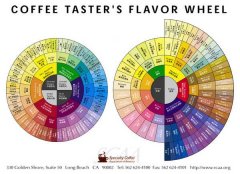
SCAA Flavor Wheel Coffee Tasters Flavor Wheel bilingual PDF download
Mas Enzymatic Flowery Floral Jasmine Wintergreen Fragrant Cardamon, Caraway Sweet Basil, Anise Fruity Citrus Lemon Tangerine Berry-like Raspberry Blackberry Herby Alliaceous Onion Garlic Leguminous Cabbage Alfalfa Sugar Browning Nutty Nut-
- Next
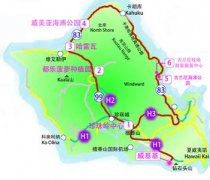
Boutique coffee beans introduce Hawaii Kona / Kona Coffee (Hawaii Kona)
Hawaii, a beautiful tropical Pacific island, not only produces beautiful scenery, but also produces the famous Kona coffee. Kona is also named after origin. Only coffee beans grown and strictly certified on the southwest coast of Hawaii's main island, 20 miles long and 2 miles wide, 150m ~ 750m above sea level, covering the slopes of Hualalai and Mauna Loa volcanoes, can be crowned with Kon.
Related
- Detailed explanation of Jadeite planting Land in Panamanian Jadeite Manor introduction to the grading system of Jadeite competitive bidding, Red bid, Green bid and Rose Summer
- Story of Coffee planting in Brenka region of Costa Rica Stonehenge Manor anaerobic heavy honey treatment of flavor mouth
- What's on the barrel of Blue Mountain Coffee beans?
- Can American coffee also pull flowers? How to use hot American style to pull out a good-looking pattern?
- Can you make a cold extract with coffee beans? What is the right proportion for cold-extracted coffee formula?
- Indonesian PWN Gold Mandrine Coffee Origin Features Flavor How to Chong? Mandolin coffee is American.
- A brief introduction to the flavor characteristics of Brazilian yellow bourbon coffee beans
- What is the effect of different water quality on the flavor of cold-extracted coffee? What kind of water is best for brewing coffee?
- Why do you think of Rose Summer whenever you mention Panamanian coffee?
- Introduction to the characteristics of authentic blue mountain coffee bean producing areas? What is the CIB Coffee Authority in Jamaica?

